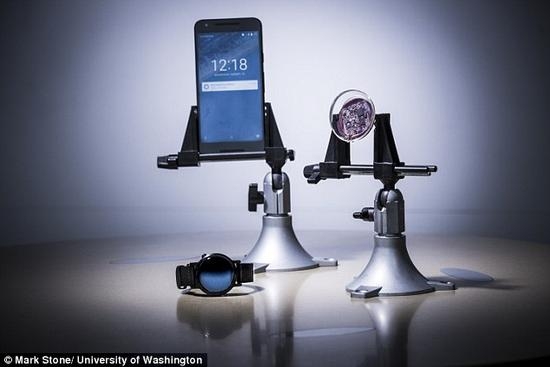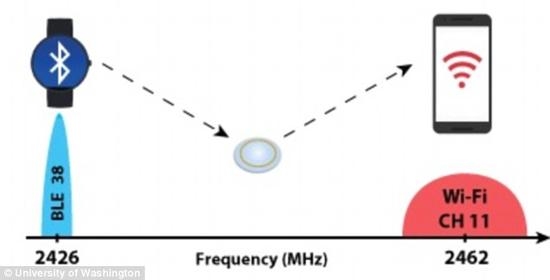Contact lenses can also connect mobile phones? See how they do it

According to foreign media reports, the research group of the University of Washington in the United States recently used "interactive scattering communication" technology to allow contact lenses to connect wirelessly with mobile devices such as smart phones and watches so that the contact lenses could transmit human health information to mobile devices.
The operating principle of this technology is to first convert the bluetooth signal of the smart device into an acceptable Wi-Fi signal, which belongs to the hijacked Bluetooth signal technology and then uses it to meet the information transmission needs of many small-sized devices, such as contact lenses and brains. Implants, etc.
Vikram Iyer, an electrical engineer at the University of Washington, said: "For implantable devices, wireless connectivity can change how people manage chronic diseases. For example, contact lenses monitor blood sugar levels in diabetic patients' tears. When the blood sugar level drops, it can send information to the smart phone. "
This study shows for the first time that power-limited devices can also interconnect information with other computers via standard Wi-Fi communication technology. Behind it is the need to rely on "backscatter" communication technology to allow devices to exchange information by reflecting existing signals. Vamsi Talla, an electronic engineer at the University of Washington, mentioned:
Instead of generating Wi-Fi signals, our technology creates Wi-Fi by using Bluetooth signals from nearby mobile devices.

University of Washington researchers use "interactive scattering communication technology" to reflect the transmitted signals between different devices. In their research, they discovered that smart watches can transmit Bluetooth signals to contact lenses equipped with antennas. They turn Bluetooth signals into "monophonic signals" and can be used to encode data as Wi-Fi signals.
Computer scientist Shyan Gollakota said the technology can also be used to create new types of smart credit cards. Information will be interconnected between credit cards to facilitate the process of transfer between consumers.
The core point of this technology is to enable the Bluetooth signal sent by mobile devices through the mobile device. After the conversion, the Bluetooth signal will generate Wi-Fi to access the network and connect with the mobile device.
Related Reading
Exposing Google Smart Contact Lenses is just a product that exists on slides
Bluetooth 5.0 Preview: 7 Major Features
Low Voltage Unarmoured cable is a type of electrical cable that is used to transmit electrical power from one location to another at a voltage level of less than 1000 volts. It is typically used in applications where the cable will be installed underground or in areas where it may be exposed to moisture, chemicals, or other harsh environmental conditions.
The cable is made up of a number of individual conductors that are insulated with a low voltage insulation material, such as PVC or XLPE. These conductors are then twisted together to form a cable core, which is surrounded by a protective sheath made of PVC or other suitable material.
Unlike armoured cables, which have a layer of steel or other metal armour to protect the cable from physical damage, unarmoured cables rely on their protective sheath to provide mechanical protection. This makes them lighter and more flexible than armoured cables, but also less resistant to damage.
Low Voltage Unarmoured cables are commonly used in a variety of applications, including power distribution, lighting, and control systems. They are available in a range of sizes and configurations to suit different requirements, and can be customized to meet specific needs.
Low Voltage XLPE Insulated Cable,Low Voltage Direct Burial Cable,Pvc Earthing Copper Cable,Unarmoured PVC Low Voltage Power Cable,Low Voltage PVC Sheathed Non-Armoured Power Cable
Ruitian Cable CO.,LTD. , https://www.rtpowercable.com